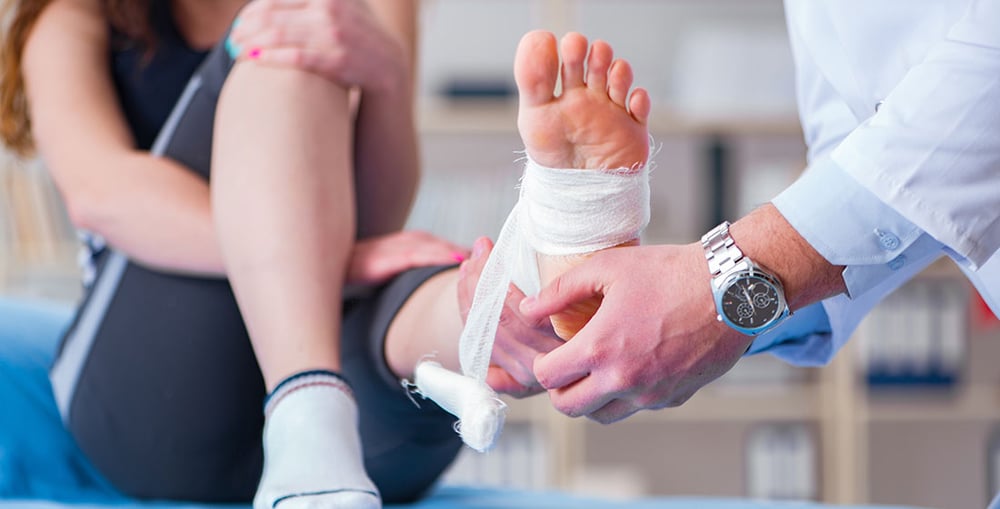This article is part of the Complete Guide to Wound Care.
People with diabetes have to take special care of their feet. Infection and gangrene are the most common foot problems associated with patients suffering from diabetes.

The cause of diabetic foot problems
There are two primary causes for these specific problems: nerve damage and loss of circulation. The loss of sensation and circulation can make it difficult to detect a foot problem arising. If you're not aware of an infection or diabetic ulcer, it could be a lot worse by the time you notice.
Preventing infection
The best way to protect yourself against infection and a diabetic foot ulcer is prevention. Along with a yearly, comprehensive foot exam with your physician, here are some additional ways to protect your feet:
- Wash your feet in warm water every day. Be sure to test it to make sure it's not too hot and always make sure to thoroughly dry your feet after they soak.
- Dry your feet well.
- Keep the skin soft with moisturizing lotion, but avoid putting it between your toes.
- Inspect your feet every day. Check for cuts, sores, blisters, calluses, and other problems. Always inspect your feet, even if it means having someone help you. Report any changes right away.
- Always wear clean, dry socks. Wearing socks that properly fit you can help avoid blisters and possible infections.
- Make sure your shoes fit well.
- Never walk barefoot. This goes for both indoor and outdoor settings. Going barefoot can lead to injury. Try and avoid it with a proper fitting pair of shoes.
- Check your shoes! It's easy for pebbles to get into your shoes. Make sure you check inside before putting them on to prevent hurting your feet. If you do happen to injure your foot, let your physician know right away.
Know the signs of at-risk feet
Even if you follow the best prevention methods - and take care of your feet - you can still find yourself having at-risk feet. One of the most common misconceptions about diabetic foot issues is that if you ignore it, it will go away. Being at-risk does not mean it's too late. And just because you aren't at-risk now, doesn't mean that it's too early to take action. It's important to know the signs of at-risk feet so you can know when immediate actions need to be taken. Stay on top of your foot health and look for these at-risk signs:
- Neuropathy
- Deformity of the foot
- History of foot ulceration
- Absent or diminished pulses
Have a podiatrist on your diabetic care team
Whether you have diabetic foot problems currently, or want to reduce your risk of a diabetic foot ulcer, the most important step you can take finding a podiatrist. A podiatrist is a foot specialist that can provide a more thorough exam to prevent amputation by detecting warning signs of serious diabetic foot-related issues.
Warning signs include:
- Bleeding from calluses
- Calluses that are changing color
- Changes in skin temperature
- Skin cracking, especially around the heel
- Ingrown toenails
- Skin discoloring
- Slow healing sore
- Swelling
Schedule yearly exams with a podiatrist and continue to do daily self-checks. If you are currently experiencing diabetic foot problems, visit your podiatrist every 3 - 6 months. If you detect an issue, call your foot specialist immediately.
Logansport Memorial Hospital's expert podiatrist
Looking for a podiatrist to help treat and/or heal your diabetic foot issues? Make an appointment with our board-certified foot and ankle specialist, Dr. Scott Marsh.



